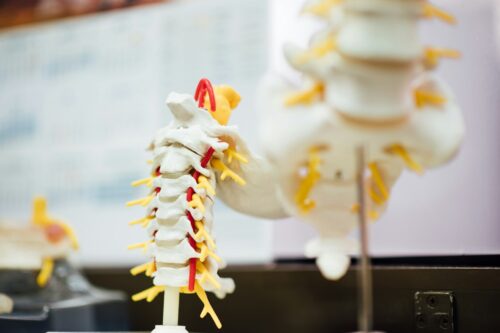A recent study from the Francis Crick Institute in London has taken a key step in explaining how the human body takes shape in its earliest stages. The researchers behind the study focused on modeling the formation of the spine and notochord, a slender, rod-like structure that acts as a kind of GPS for a developing embryo. The notochord sends signals to surrounding cells, guiding them on where to move and what type of tissue to develop into. Together, these structures lay the foundation for the trunk—the central region of the body that will later support the torso and connect the limbs.
The research was driven by a simple question: How does an embryo actually construct the trunk? Tiago Rito, a researcher with a background in statistics and systems biology and the lead author of the study, recalls the team began by sequencing chicken embryos to identify the specific cells responsible for forming the spine and other key structures of the trunk. The researchers were able to identify two major groups of progenitor cells—early-stage cells that have the potential to develop into different tissues. The first group, neuromesodermal progenitors (NMPs), are highly adaptable cells that have the potential to develop into either neural tissue, which forms the brain and spinal cord, or mesodermal tissue, which develops into muscles, bones, and cartilage. The second group, notochord progenitors, forms the notochord, which later develops into the intervertebral disk—the cushions between the vertebrae in the spine.
Next, the researchers used single-cell transcriptomics, a technique that measures the activity of genes in individual cells, to map progenitor cell populations in chick embryos. Using this map as a reference, they then directed human embryonic stem cells to develop into similar cell types, replicating the formation of the trunk. The stem cells were cultivated on micropatterned surfaces designed to mimic the spatial arrangement of cells in an embryo.
By controlling the cellular environment with the addition of specific growth factors and timed inhibition of others, they found that blocking certain parts of the Transforming Growth Factor Beta (TGFβ) pathway—a family of signaling molecules that help regulate the growth of certain tissues—guided the stem cells to self-organize into structured colonies. Within these colonies, cells at the center began to exhibit neural characteristics, while those at the edges expressed signals for mesoderm and notochord progenitors. Moreover, turning off proteins that normally modulated cell signaling allowed for a more refined and spatially controlled expression of other genes. This breakthrough enabled the creation of three-dimensional “notoroids”: miniature, embryo-like structures that accurately mimic the formation and signaling functions of the notochord, essentially recreating the blueprint for human trunk development in the lab.
The team’s journey wasn’t without obstacles. “One of the challenges with this particular study is that it’s very interdisciplinary. We’re going from single-cell sequencing in chicken embryos,” said James Briscoe, a principal group leader at the Francis Crick Institute and the senior author of the study. “There’s a broad range of techniques in there, and then integrating that into a single story and figuring out how all those bits of information fit together was a bit of a challenge.” Overcoming these hurdles required not only technical expertise but also prompted researchers to combine diverse forms of data into a cohesive narrative of embryonic development.
Rito emphasized that this work lays the groundwork for future advances in regenerative medicine, potentially guiding the development of therapies for damaged cartilage, bones, and vertebral discs. Beyond the medical implications, these findings also enrich our understanding of evolutionary biology. The notochord is the defining characteristic of chordates, a group that includes fish, amphibians, reptiles, birds, and mammals. In humans, the notochord disappears during development and forms part of the spinal discs, while in some species, like lancelets, they are retained through life. Understanding its molecular formation offers insights into evolutionary pathways shared by diverse species.

